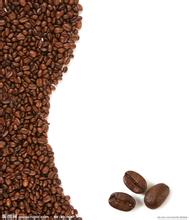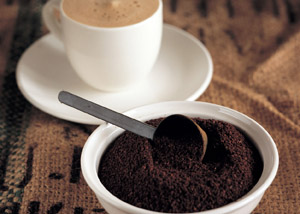Introduction to the difference between the baking degree of coffee beans and cooked beans
Introduction to the difference between the baking degree of coffee beans and cooked beans
First of all, it is not the same time point and temperature point when every bean reaches a certain baking degree. Because the water content, size, and the softness and hardness of beans will all be due to the phenomenon of uneven baking, the professional point is that the specific heat of coffee beans is different, and the concept of specific heat generally refers to the heat energy required for coffee beans to increase by 1 degree Celsius. With different water content, the particle size of beans is different, although they are all heated with the same heat, but because of the different specific heat, the baking degree is easy to be different, resulting in uneven quality. In the words of teacher Taguchi, it is a miracle that different kinds of beans can be baked evenly together.
Give an example to illustrate the difference in baking degree caused by different specific heat. The concentrated beans used in our store pursue the high sweetness of the front, slightly sour in the middle, and the flavor of nuts and chocolate in the back. The mix is made in a certain proportion of Brazil, Kenya and Mantenin. I use the cooked bean matching method, which means that a single bean seed is baked first and then blended. During the baking process (the temperature displayed varies according to the design position of the baking furnace and probe) the temperature of the first explosion of Kenyan products is about 192 degrees Celsius, and the temperature of the second explosion is about 218 degrees Celsius. Mantenin's first explosion is about 196 degrees Celsius, and the second explosion is about 220 degrees Celsius, while the temperature at which Brazil enters the explosion will be the highest, reaching about 202 degrees Celsius. The second explosion will be around 228 degrees. If the three beans are baked together, the definition of baking degree and taste will be quite vague. There is no way to judge the overall flavor characteristics of beans and the instability of baking degree, resulting in unstable taste.
The second reason for the instability of customer beans is also caused by hard work-the change in the proportion of coffee beans after water loss. Different beans, after baking, because of different moisture content, the water loss rate will not be the same, after baking, the quality of beans will be different and expected. Most of the blended coffee is blended according to the percentage, so the quality of the beans after baking is about 20% less than that before roasting, because the water content is different, the water loss rate is also different at the same temperature, if you mix and bake, the imagined blending ratio will change with the change of water loss rate, so it is difficult to control the trend of taste.
Then again, is it possible to mix and bake beans well? In fact, this possibility is still possible, but it takes a lot of energy to delve into techniques and baking theory.
Secondly, the quality of each baked bean and its proportion in the overall blending should be calculated reasonably.
I think this is very difficult to do, feasibility, I think it is about 30%. So we have to ask, how to adjust the tactics? My suggestion is to appropriately prolong the time of dehydration, that is, to prolong the time from feeding to explosion, which is a process of full dehydration so that the moisture content of beans is approximately the same, which plays a vital role in achieving a uniform baking degree for beans with different moisture content, such as sundried beans. Having said that, this kind of baking kung fu still has a long way to go and cannot be practiced overnight.
Raw spelling can save a lot of time for bakers or bean suppliers, but do you want to think about the stability of beans and the taste trend of beans? I do not approve of baking after spelling, so I will assure my customers that I will never sell raw beans, absolutely take apart each bean for baking, and match it in a uniform proportion.

Important Notice :
前街咖啡 FrontStreet Coffee has moved to new addredd:
FrontStreet Coffee Address: 315,Donghua East Road,GuangZhou
Tel:020 38364473
- Prev

Coffee beans need to be baked for a few days, and why do they need beans?
Coffee beans need to be baked for a few days, so why do you want beans? is freshly roasted coffee the best? Can we make a good cup of coffee from freshly roasted coffee beans? Our opinion is that it is best to wait more than 6 hours for coffee extracted without pressure apparatus (single coffee of origin) (cup test requires 8-12 hours), while for Espresso coffee it takes more than 5 days. The exhaust effect of coffee beans is being completed.
- Next

Description of Coffee Bean Flavor by washing at High altitude introduction to the treatment method of manor production area
High altitude washing coffee bean flavor description manor production area treatment method introduction honey treatment process is vulnerable to pollution and mildew, need to closely monitor the whole process, constantly turn, speed up drying, in order to avoid bad fermentation flavor. Its advantage is that it can best preserve the original sweet flavor of the ripe fruit of coffee, making the coffee show a light and elegant flavor of black sugar and drupe, while the flavor of berry is also supported.
Related
- Guji coffee producing area of Guji, Ethiopia: Humbela, Shakiso, Wulaga
- What is the most expensive variety of Qiloso in BOP multi-variety group?
- How to store the coffee beans bought home?
- Why are Yemeni coffee beans so rare now?
- Ethiopian Sidamo all Red Fruit Sun Sun Santa Vini Coffee beans
- SOE is mostly sour? What does it mean? Is it a single bean? what's the difference between it and Italian blending?
- Is Italian coffee beans suitable for making hand-brewed coffee?
- How to choose coffee beans when making cold coffee? What kind of coffee beans are suitable for making cold coffee?
- Just entered the pit to make coffee, what kind of coffee beans should be chosen?
- Can only Japan buy real Blue Mountain Coffee? What are authentic Jamaican Blue Mountain coffee beans?

